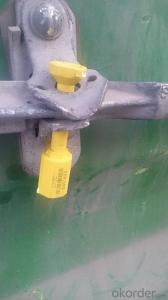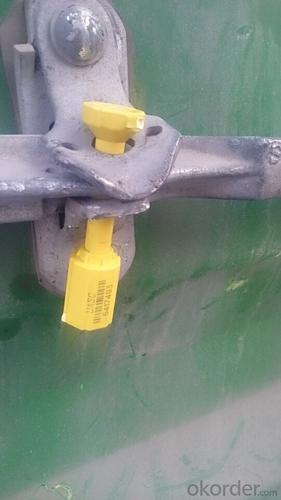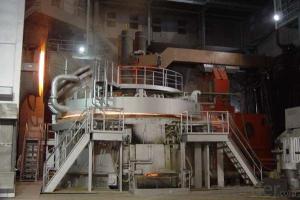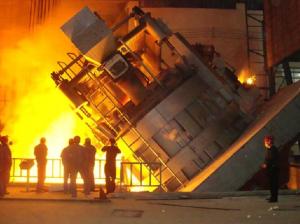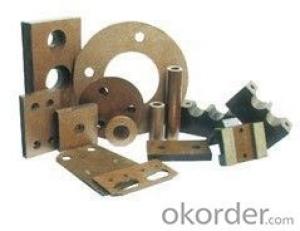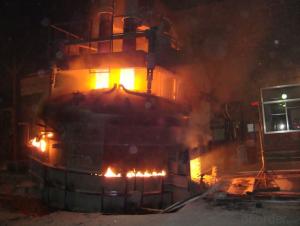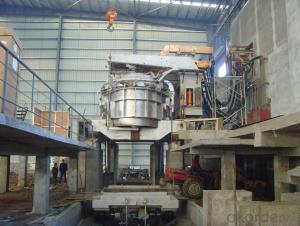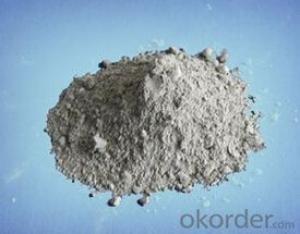Steel-making Raw Materials Used in Electric Arc Furnace
- Loading Port:
- Tianjin
- Payment Terms:
- TT OR LC
- Min Order Qty:
- 20 m.t.
- Supply Capability:
- 6000 m.t./month
OKorder Service Pledge
OKorder Financial Service
You Might Also Like
Introduction:
Calcined anthracite can be called carbon additive, carbon raiser, recarburizer, injection coke, charging coke, gas calcined anthracite.
Carbon Additive/Calcined Anthracite Coal may substitute massively refinery coke or graphite. Meanwhile its cost is much less than the refinery coke and graphite. Carbon Additive is mainly used in electric steel ovens, water filtering, rust removal in shipbuilding and production of carbon material.
It has good characteristics with low ash, low resistivity, low sulphur, high carbon and high density. It is the best material for high quality carbon products. It is used as carbon additive in steel industry or fuel.
Features:
Best quality Taixi anthracite as raw materials through high temperature calcined at 800-1200 ℃ by the DC electric calciner with results in eliminating the moisture and volatile matter from Anthracite efficiently, improving the density and the electric conductivity and strengthening the mechanical strength and anti-oxidation, It has good characteristics with low ash, low resistivity, low carbon and high density. It is the best material for high quality carbon products, it is used as carbon additive in steel industry or fuel.
Specifications:
F.C.% | 95MIN | 94MIN | 93MIN | 92MIN | 90MIN | 85MIN | 84MIN |
ASH % | 4MAX | 5MAX | 6 MAX | 6.5MAX | 8.5MAX | 12MAX | 13MAX |
V.M.% | 1 MAX | 1MAX | 1.0MAX | 1.5MAX | 1.5MAX | 3 MAX | 3 MAX |
SULFUR % | 0.3MAX | 0.3MAX | 0.3MAX | 0.35MAX | 0.35MAX | 0.5MAX | 0.5MAX |
MOISTURE % | 0.5MAX | 0.5MAX | 0.5MAX | 0.5MAX | 0.5MAX | 1MAX | 1MAX |
Pictures
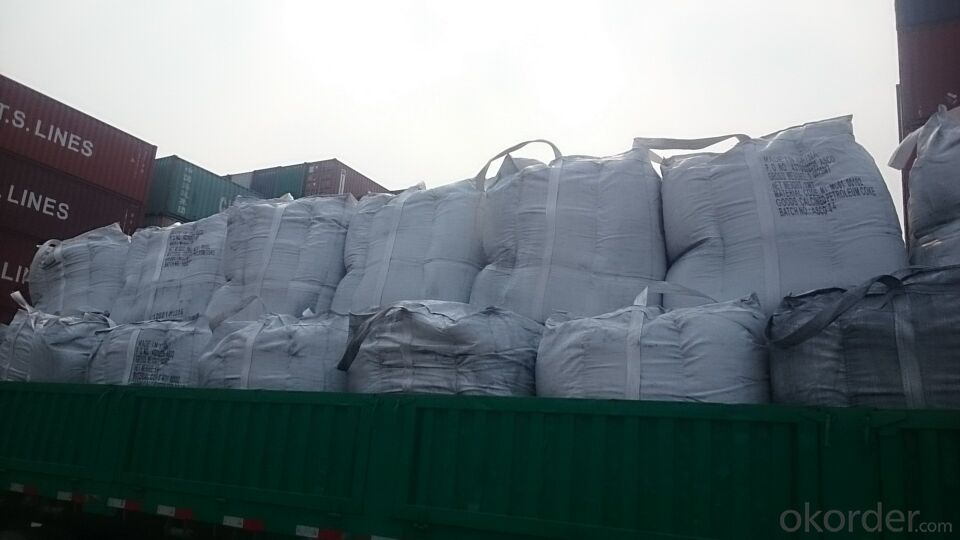
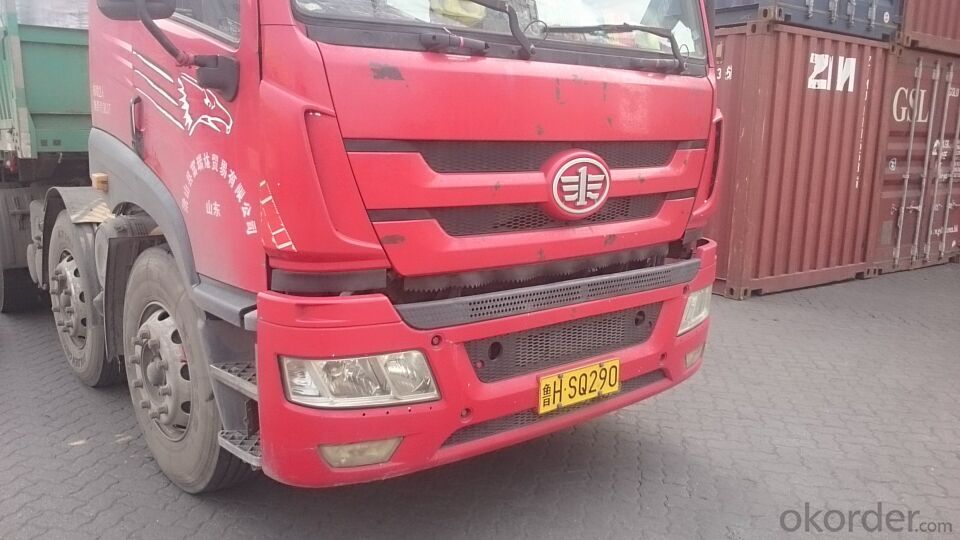
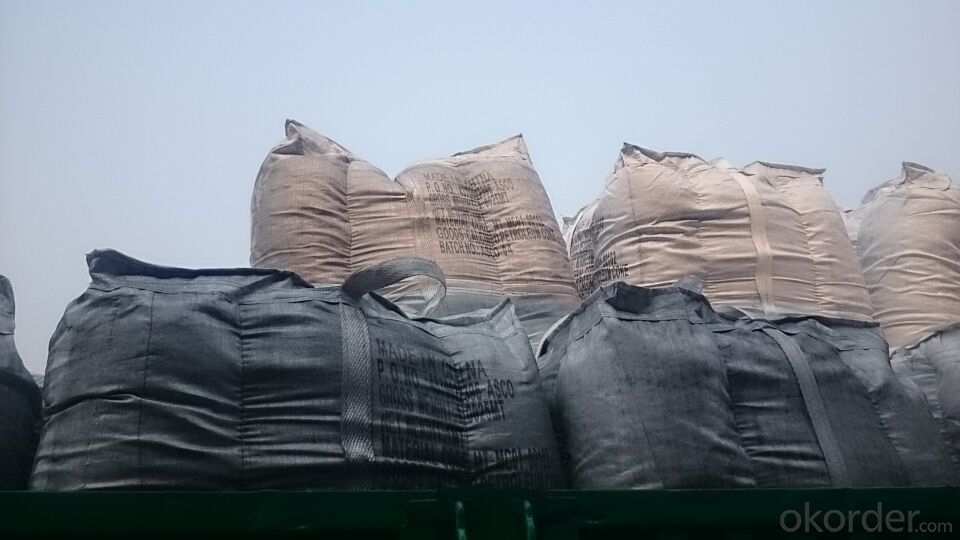
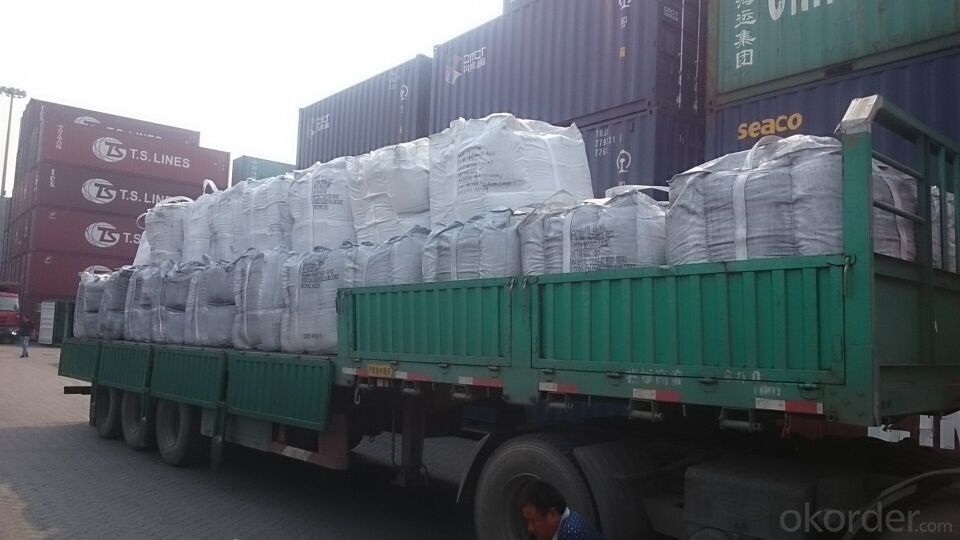
FAQ:
Packing:
(1). Waterproof jumbo bags: 800kgs~1100kgs/ bag according to different grain sizes;
(2). Waterproof PP woven bags / Paper bags: 5kg / 7.5kg / 12.5kg / 20kg / 25kg / 30kg / 50kg small bags;
(3). Small bags into jumbo bags: waterproof PP woven bags / paper bags in 800kg ~1100kg jumbo bags.
Payment terms
20% down payment and 80% against copy of B/L.
Workable LC at sight,
- Q: Appearance, hardness, electrical conductivity, use of carbon 60
- C60 is a molecule composed of 60 carbon atoms in the molecule, it is like football, so also known as footballene (C60. This material is composed of C60 molecules, rather than by the atoms.) C60 is simply made of carbon atoms with stable molecules, it has 60 vertices and 32 sides. The 12 is Pentagon and 20 hexagon. Its molecular weight is about 720.
- Q: How does carbon monoxide affect air quality and human health?
- Carbon monoxide (CO) is a colorless, odorless gas that is produced from the incomplete combustion of fossil fuels, such as gasoline, coal, and wood. It is a major contributor to air pollution and has significant impacts on air quality and human health. In terms of air quality, carbon monoxide is a pollutant known as a criteria air pollutant, which means it is regulated by government agencies due to its harmful effects. When released into the atmosphere, CO reacts with other pollutants, such as nitrogen oxides and volatile organic compounds, to form ground-level ozone, which is a major component of smog. High levels of ground-level ozone can cause respiratory problems, particularly for individuals with pre-existing respiratory conditions such as asthma. Furthermore, carbon monoxide is a potent greenhouse gas that contributes to global warming and climate change. It traps heat in the atmosphere and prevents it from escaping into space, leading to rising temperatures and altered weather patterns. In terms of human health, carbon monoxide is highly toxic. When inhaled, it binds to hemoglobin in the blood, reducing its ability to carry oxygen to vital organs and tissues. This can lead to a range of health issues, from mild symptoms like headaches, dizziness, and fatigue, to more severe conditions like chest pain, confusion, and even death. Vulnerable populations such as children, the elderly, and individuals with pre-existing heart or lung conditions are particularly susceptible to the harmful effects of carbon monoxide. Exposure to high levels of carbon monoxide can occur in various settings, including indoor environments where combustion sources like gas stoves, heaters, and fireplaces are present, as well as in outdoor areas with heavy traffic or industrial emissions. To mitigate the impact of carbon monoxide on air quality and human health, regulatory measures such as emission standards for vehicles and industrial sources have been implemented. Additionally, public awareness campaigns and the use of carbon monoxide detectors in homes and workplaces are essential in detecting and preventing potential exposure to this harmful gas. In conclusion, carbon monoxide significantly affects air quality and human health. It contributes to air pollution, including the formation of ground-level ozone and greenhouse gas emissions, which have adverse effects on respiratory health, the environment, and climate change. Understanding the sources, effects, and implementing appropriate measures to reduce exposure to carbon monoxide is crucial for protecting both air quality and human well-being.
- Q: What are the impacts of carbon emissions on marine life?
- Carbon emissions, particularly in the form of carbon dioxide (CO2) released from burning fossil fuels, have significant impacts on marine life. One of the primary effects is ocean acidification, which occurs when excess CO2 is absorbed by seawater, leading to a decrease in pH levels. This acidification can have detrimental effects on marine organisms, especially those with calcium carbonate shells or skeletons, such as corals, mollusks, and some plankton. As the pH levels decrease, it becomes harder for these organisms to build and maintain their shells. This can result in reduced growth rates, weakened shells, and increased vulnerability to predation and disease. Additionally, the dissolution of calcium carbonate shells due to ocean acidification can disrupt the entire food chain, as many organisms rely on these shells for protection or as a food source. Furthermore, carbon emissions contribute to global warming, leading to rising sea temperatures. Warmer waters can cause coral bleaching, a phenomenon where corals expel the colorful algae living within their tissues, resulting in the loss of their main food source and leading to their eventual death. Coral reefs are vital ecosystems that support a diverse array of marine life, and their decline has far-reaching consequences on biodiversity and coastal communities that rely on them for tourism and fisheries. The impacts of carbon emissions on marine life extend beyond individual species and ecosystems. Climate change, driven by carbon emissions, can disrupt ocean currents, alter weather patterns, and cause changes in nutrient availability. These changes can affect the distribution and abundance of marine organisms, leading to shifts in species composition and potential loss of biodiversity. It is worth noting that the impacts of carbon emissions on marine life are interconnected with other stressors such as overfishing, pollution, and habitat destruction. These combined pressures exacerbate the vulnerability of marine ecosystems and increase the risks of irreversible damage. To mitigate the impacts of carbon emissions on marine life, reducing greenhouse gas emissions is crucial. Transitioning to cleaner and renewable energy sources, improving energy efficiency, and adopting sustainable practices can help slow down the rate of ocean acidification and global warming. Additionally, protecting and restoring marine habitats, implementing sustainable fishing practices, and reducing pollution can enhance the resilience of marine ecosystems and promote the recovery of marine life.
- Q: How does carbon impact the prevalence of ocean acidification?
- Climate change is caused by carbon dioxide, a greenhouse gas. When humans release excess carbon dioxide into the atmosphere through activities like burning fossil fuels, a large portion of it is absorbed by the oceans. This absorption leads to a chemical reaction that increases the amount of hydrogen ions in the water, resulting in a decrease in pH levels. We call this process ocean acidification. When carbon dioxide dissolves in seawater, it creates carbonic acid, which then breaks apart into hydrogen ions and bicarbonate ions. The increased concentration of hydrogen ions reduces the availability of carbonate ions, which are essential for shell-forming organisms such as corals, mollusks, and some plankton species. These organisms rely on carbonate ions to construct and maintain their shells or skeletons. As ocean acidification progresses, the saturation level of calcium carbonate, a crucial mineral for shell production, decreases. This makes it more challenging for marine organisms to build their shells, leading to slower growth rates and weaker structures. Under extreme acidification conditions, some organisms like corals and oysters may even experience the dissolution of their shells. The effects of ocean acidification extend beyond shell-building organisms. It disrupts the delicate balance of various species and their interactions within the marine ecosystem. For instance, the reduced availability of carbonate ions can impact the growth and survival of phytoplankton, which are the foundation of the marine food chain. Consequently, this disruption can have a cascading effect on fish populations and other marine organisms. Additionally, ocean acidification can affect the physiological functions of marine organisms, including their reproduction, behavior, and immune systems. Some studies suggest that acidification can impair the ability of certain fish species to detect predators or navigate, making them more susceptible to predation and decreasing their chances of survival. To summarize, human carbon emissions contribute to ocean acidification. The increased concentration of carbon dioxide in the atmosphere is absorbed by the oceans, leading to lower pH levels and reduced availability of carbonate ions. This process has significant implications for shell-building organisms, the marine food chain, and the overall health and biodiversity of our oceans. It is crucial to address carbon emissions and mitigate climate change to minimize the impacts of ocean acidification and safeguard the well-being of marine ecosystems.
- Q: How much is a ton of carbon fiber? How much difference is made between domestic and imported?
- Depending on what type, the difference is different
- Q: Just come out to work, do activated carbon, often see carbon materials and carbon materials, I do not know what the difference, trouble you!
- Carbon refers to elements. Carbon materials usually refer to materials that contain carbon and are the main bodyCarbon is a carbon containing substance of no composition and property consisting of carbon elementsCarbon materials are usually specified, especially carbon and graphite materialsCarbon material is a broad carbon containing materialAbove.
- Q: How does carbon affect the formation of wildfires?
- Wildfires are not directly impacted by carbon, but their intensity and duration are heavily influenced by it. Carbon is a vital component of organic matter, including vegetation and deceased plants, which act as fuel for wildfires. When a wildfire occurs, the heat causes the carbon in these fuels to react with oxygen, resulting in combustion. This process releases energy in the form of heat, light, and gases, such as carbon dioxide (CO2) and carbon monoxide (CO). The presence of carbon-rich fuels significantly contributes to the spread and intensity of wildfires. Dry and dead vegetation, often referred to as fuel loads, are extremely flammable and enable fires to rapidly expand. Furthermore, the amount of carbon present in these fuels determines the amount of energy released during combustion. As a result, the higher the carbon content, the more intense the fire becomes. Additionally, the combustion of carbon during wildfires releases substantial amounts of carbon dioxide into the atmosphere. Carbon dioxide is a greenhouse gas that traps heat in the Earth's atmosphere, contributing to the greenhouse effect and ultimately leading to global warming. Elevated levels of carbon dioxide in the atmosphere worsen climate change, further impacting the frequency and severity of wildfires. In conclusion, carbon indirectly influences the formation of wildfires by acting as fuel for combustion. The carbon content in vegetation and deceased plants determines the intensity and spread of wildfires, while the release of carbon dioxide during combustion contributes to the long-term effects of wildfires on climate change.
- Q: How does carbon affect the water cycle?
- Carbon affects the water cycle in several ways. Firstly, carbon plays a crucial role in the atmosphere, where it exists in the form of carbon dioxide (CO2). The concentration of CO2 in the atmosphere has been increasing due to human activities such as burning fossil fuels, deforestation, and industrial processes. This increase in carbon dioxide levels leads to global warming and climate change, which in turn affects the water cycle. One major impact of increased carbon dioxide is the alteration of precipitation patterns. Warmer temperatures caused by carbon emissions can lead to more evaporation from bodies of water, resulting in increased water vapor in the atmosphere. This extra moisture can then lead to more intense rainfall in some areas, causing floods, while other regions may experience droughts as evaporation rates exceed precipitation rates. These changes in precipitation patterns disrupt the balance of the water cycle, affecting the availability of water resources for both human and natural systems. Furthermore, carbon dioxide dissolved in water forms carbonic acid, which lowers the pH level of oceans and bodies of water, a process known as ocean acidification. This acidification can negatively impact marine life, including shellfish, corals, and other organisms that rely on calcium carbonate to build their shells or skeletons. As a result, the disruption of these species can have cascading effects through the food chain, ultimately impacting the entire ecosystem. Carbon also influences the melting of polar ice caps and glaciers. Rising global temperatures caused by increased carbon emissions accelerate the melting process. As the ice melts, it releases freshwater into the oceans, leading to a rise in sea levels. This rise in sea levels can have devastating consequences for coastal communities, increasing the risk of flooding and erosion. In summary, carbon emissions, primarily in the form of carbon dioxide, have a significant impact on the water cycle. They alter precipitation patterns, contribute to ocean acidification, and accelerate the melting of ice, all of which disrupt the delicate balance of the water cycle and have far-reaching consequences for ecosystems and communities around the world.
- Q: Can carbon 14 identify the age of porcelain?
- You can use the theory, but the carbon fourteen method is mainly used to identification of ancient cultural relics, generally refers to the more distant, for modern artifacts, fourteen of the carbon method is difficult to get the exact time, China mainly appeared in the past one thousand years, generally not to use carbon fourteen dating method.
- Q: Made of high strength structural partsThe market quality of the carbon fiber plate is too much, the price is low, do not know how to choose. A knowledgeable friend can introduce larger enterprises? The quality of the carbon fiber board produced must be better and the performance should be stable!
- You are not for the prestressing bar, if you find the building reinforcement for Tianjin Beijing card, if you do the structure reinforcement for Jiangsu and Wuxi via the new material industry, these are relatively well-known.
Send your message to us
Steel-making Raw Materials Used in Electric Arc Furnace
- Loading Port:
- Tianjin
- Payment Terms:
- TT OR LC
- Min Order Qty:
- 20 m.t.
- Supply Capability:
- 6000 m.t./month
OKorder Service Pledge
OKorder Financial Service
Similar products
Hot products
Hot Searches
Related keywords
